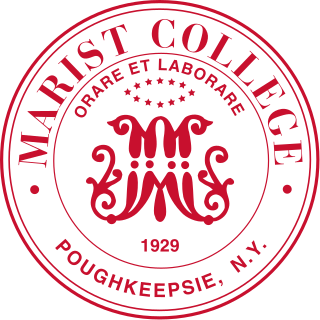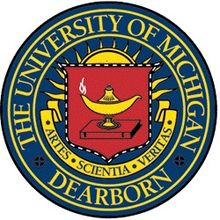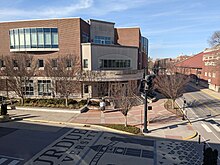
Computer science is the study of computation, information, and automation. Computer science spans theoretical disciplines to applied disciplines. Though more often considered an academic discipline, computer science is closely related to computer programming.

Purdue University is a public land-grant research university in West Lafayette, Indiana, and the flagship campus of the Purdue University system. The university was founded in 1869 after Lafayette businessman John Purdue donated land and money to establish a college of science, technology, and agriculture in his name. The first classes were held on September 16, 1874, with six instructors and 39 students.

Indiana University–Purdue University Indianapolis, commonly referred to as IUPUI, is a public research university in Indianapolis, Indiana, United States. It is a collaboration between Indiana University and Purdue University that offers undergraduate, graduate, and professional degrees from both universities. Administered primarily through Indiana University as a core campus and secondarily through Purdue University as a regional campus, it is Indiana's primary urban research and academic health sciences institution. IUPUI is located in downtown Indianapolis along the White River and Fall Creek.

Marist College is a private university in Poughkeepsie, New York. Founded in 1905, Marist was formed by the Marist Brothers, a Catholic religious institute, to prepare brothers for their vocations as educators. By 1969, the college had become private with a predominantly lay board of trustees and in 2003, the Catholic Church recognized Marist as a secular institution.

The University of Michigan–Dearborn (UM-Dearborn) is a public university in Dearborn, Michigan. Founded in 1959 with a gift from the Ford Motor Company, it was initially known as the Dearborn Center, operating as a remote branch of the University of Michigan. The branch gradually developed into a fully-fledged university over the years. Upon receiving its own accreditation in 1970, the university changed its name to the University of Michigan–Dearborn, while still adhering to the policies of the University of Michigan Board of Regents.

Peter James Denning is an American computer scientist and writer. He is best known for pioneering work in virtual memory, especially for inventing the working-set model for program behavior, which addressed thrashing in operating systems and became the reference standard for all memory management policies. He is also known for his works on principles of operating systems, operational analysis of queueing network systems, design and implementation of CSNET, the ACM digital library, and codifying the great principles of computing. He has written numerous influential articles and books, including an overview of fundamental computer science principles, computational thinking, and his thoughts on innovation as a set of learnable practices.
WATFIV, or WATerloo FORTRAN IV, developed at the University of Waterloo, Canada is an implementation of the Fortran computer programming language. It is the successor of WATFOR.

The Mitchell E. Daniels, Jr. School of Business is the school of business at Purdue University, a public research university in West Lafayette, Indiana. It offers instruction at the undergraduate, master's, and doctoral levels.

The College of Computing is a college of the Georgia Institute of Technology, a public research university in Atlanta, Georgia. It is divided into four schools: the School of Computer Science, the School of Interactive Computing, the School of Computational Science & Engineering, and the School of Cybersecurity and Privacy. The College of Computing's programs are consistently ranked among the top 10 computing programs in the nation. In 2022, U.S. News & World Report ranked the Computer Science graduate program #6 in the U.S. In 2016, Times Higher Education and the Wall Street Journal ranked the College #5 in the world.

The Ira A. Fulton Schools of Engineering is the engineering college of Arizona State University. The Fulton Schools offers 25 undergraduate and 48 graduate degree programs in all major engineering disciplines, construction and computer science. In 2023 the Fulton Schools became the first university in the nation to offer a bachelor's degree, master's degree and doctoral degree in manufacturing engineering.
The College of Engineering at Michigan State University (MSU) is made up of 9 departments with 168 faculty members, over 6,000 undergraduate students, 10 undergraduate B.S. degree programs and a wide spectrum of graduate programs in both M.S. and Ph.D. levels. Each department offers at least one degree program, however many include more than one degree, multi-disciplinary programs, certifications and specialties as well as other degree programs affiliated with other colleges at Michigan State University.

Bruce Wesley Arden was an American computer scientist.
Mikhail Jibrayil (Mike) Atallah is a Lebanese American computer scientist, a distinguished professor of computer science at Purdue University.
Many in Canada share concerns about the current and future roles of women in computing, especially as these occupations increase in importance. As in many nations where computing and information technology are large industries, women in Canada have historically faced underrepresentation in education and industry. As a result, some Canadian women pursuing careers in these fields have had a lack of role models and faced sexism. There are many institutions and initiatives in Canada, however, which seek to increase representation for women in computing fields, as well as the fields of natural science and engineering in general.

Susan H. Rodger is an American computer scientist known for work in computer science education including developing the software JFLAP for over twenty years. JFLAP is educational software for visualizing and interacting with formal languages and automata. Rodger is also known for peer-led team learning in computer science and integrating computing into middle schools and high schools with Alice. She is also currently serving on the board of CRA-W and was chair of ACM SIGCSE from 2013 to 2016.

Purdue University Northwest (PNW) is a public university with two campuses in Northwest Indiana; its main campus is in Hammond with a branch campus in Westville. It is part of the Purdue University system and offers more than 70 undergraduate and graduate degree programs to approximately 6,200 students with more than 64,000 alumni.

Ahmed Hamdy Mohamed Sameh is the Samuel D. Conte Professor of Computer Science at Purdue University. He is known for his contributions to parallel algorithms in numerical linear algebra.
Saul Rosen was an American computer science pioneer. He is known for designing the software of the first transistor-based computer Philco Transac S-2000, and for his work on programming language design which influenced the ALGOL language.
Purdue University Global, Inc. is a public online university that operates as a public nonprofit institution. It is part of the Purdue University system and is Purdue's online university for working adults.

Cornell Computing and Information Science is the umbrella name for the information science program at Cornell University, a private university based in Ithaca, New York, United States.















